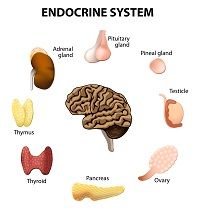Article
Dangerous Endocrine-Disrupting Chemicals in the Spotlight
Author(s):
Phthalates may be replacing lead as the leading environmental exposure concern. Some studies indicate that there may be a link between phthalates, obesity, endocrine disruption, and metabolic interference.

Phthalates may be replacing lead as the leading environmental exposure concern. During the summer of 2014, endocrine-disrupting chemicals like phthalates took center stage in health news presented to the nations. Consider the Washington Post:
- In July, they reported that phthalates are no longer allowed in children’s toys, but still abundant in food.
- In August, they reported on intersex fish—fish of both genders in one organism—and attributed the increase in numbers of these fish to endocrine-disrupting chemicals.
- In September, an article on the potential for phthalates in cosmetics to cause chronic disease, developmental disorders and fertility problems.
Phthalates are usually associated with volatile plasticizers, and easily released into the environment. Some studies indicate that there may be a link between phthalates, obesity, endocrine disruption and metabolic interference. Exposure in childhood has been considered to be the time of most concern, and that fact galvanized passage of the Consumer Product Safety Improvement Act of 2008, which forbids phthalate use in children’s toys. Plastics used in hospitals and healthcare have high levels of phthalates, and some drugs contain phthalates as binders and fillers. Alternatives are available but at considerably higher cost.
The October 2014 issue of Environmental Research contains a number of articles about phthalates, and one in particular links Helicobactor Pylori to elevated diethyl phthalate levels in humans. Researchers from North Carolina State University used NHANES date from 1999 to 2000 and found that among 1623 patients infect with H. Pylori, phthalate levels were elevated. Infection with H. Pylori appears to be an endogenous source of phthalates.
Other studies in the issue document higher levels of phthalates among obese adolescents and discuss phthalate levels in food, which are related more to processing than packaging.
Once believed to be a manufactured product, phthalates are now ubiquitous. Concern has expanded from the pediatric population to the general population. This is an area where environment influences health in ways we are only beginning to understand.




